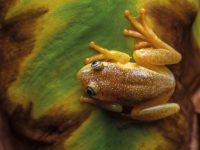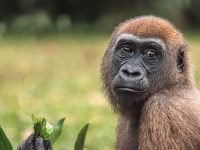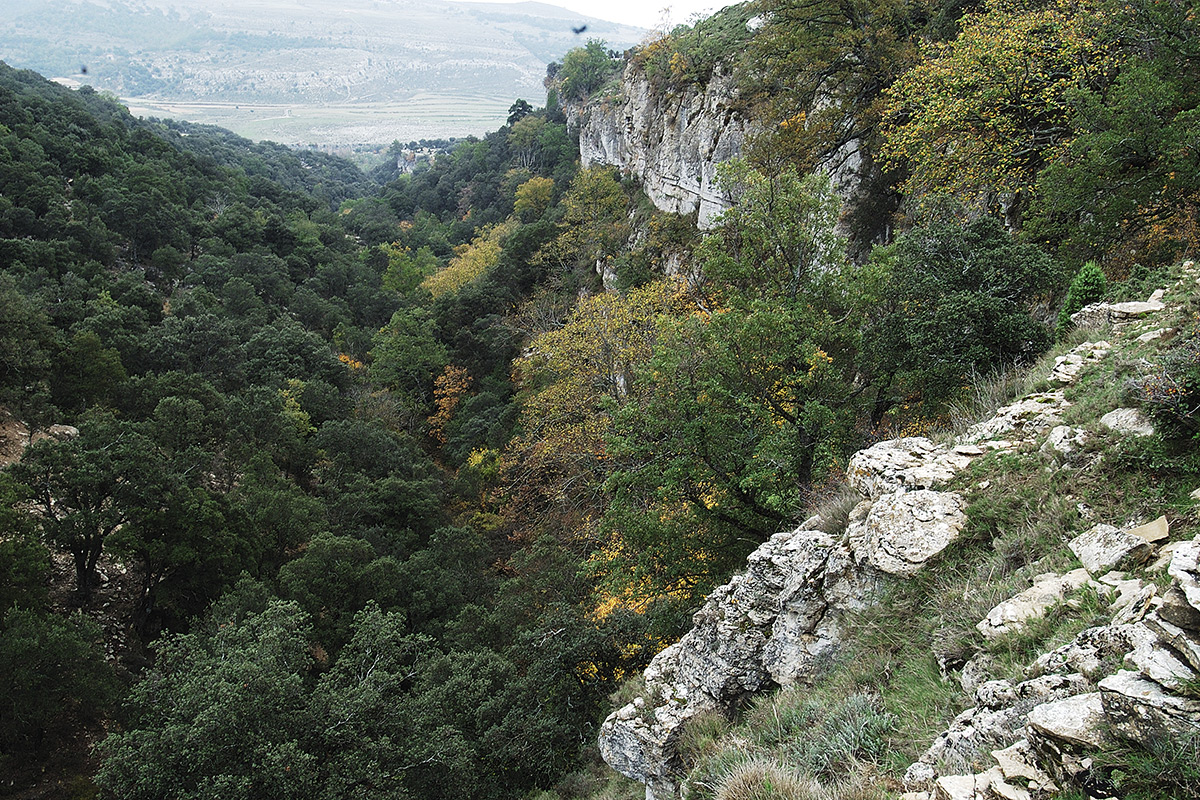
The global debate on biodiversity has inevitably led us to consider traditional knowledge of plants, ethnobotany’s basic corpus, as an inseparable part of this discipline. This fact was amply recognised by the Convention on Biodiversity. Furthermore, ethnobotanical knowledge can and should be used to achieve sustainable development that is compatible with the conservation of biodiversity.
In today’s society, fast and frantic, people barely have time to reflect on the origin of the resources used in everyday life. This situation reaches such extremes that an important part of the population in the urban world knows little of what lies beyond the shelves of supermarkets and shops. They may even be surprised when they discover that potatoes must be dug out of the ground or that animals must be sacrificed in order to provide the meat we eat. Needless to say, the knowledge that many of our medicines originate from, or are inspired by, components found in wild plants is almost nil.
«In today’s society, fast and frantic, people barely have time to reflect on the origin of the resources used in everyday life. This situation reaches such extremes that an important part of the population in the urban world knows little of what lies beyond the shelves of supermarkets and shops»
Biodiversity is at the basis of our life. Virtually all our activities make use of products originating in wild or cultivated biodiversity. Two-thirds of all humanity depend on plants as the main source of medicine. Moreover, between 25 and 50 percent of new medicines are derived from natural products, and as our knowledge on biodiversity increases, so does this percentage. We have myriad examples. Aspirin is based on a molecule discovered in willows (Salix spp.), quinine is derived from Quina (Cinchona spp.), some alkaloids used to treat childhood leukaemia and Hodgkin’s disease derive from the Rosy Periwinkle, or the periwinkle of Madagascar (Catharanthus roseus). Part of existing biodiversity has potential medicinal properties yet to be put to the test. Therapy for some of the most serious diseases affecting humankind, such as cancer or AIDS, may derive from natural products.
It is also important to think of ecological systems as an important part of biodiversity. Healthy ecosystems supply goods and services that provide security for people and potential for economic development. This includes water, agricultural productivity, fisheries, energy and protection against natural disasters. However, human activity degrades the environment and biodiversity, and the decline of these goods and services jeopardises social and economic development, often leaving out the most vulnerable sectors.
One needs only to review the statistics on population growth forecasts for the coming decades, data on the concentration of urban areas and on biodiversity loss, to realise that we are building an unsustainable future unless the current way of life changes.
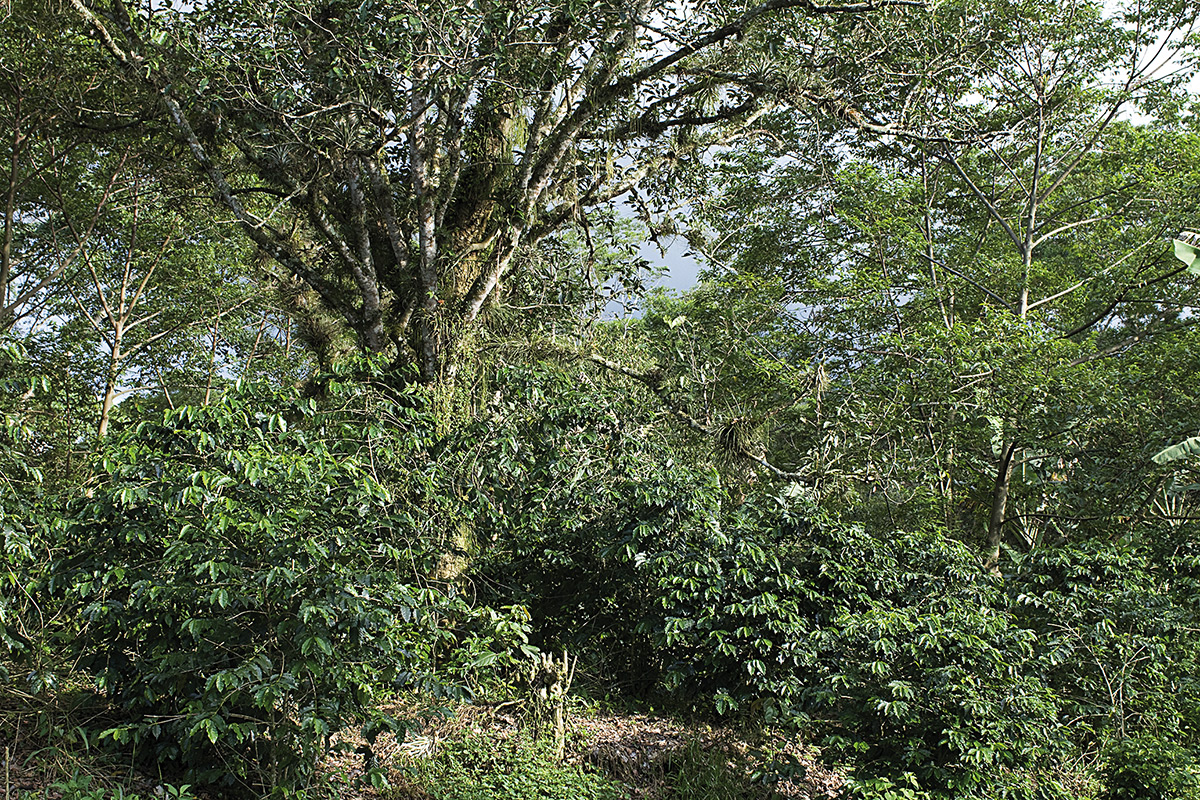
Coffee plantations are a good example showing how the exploitation of coffee can be compatible with conservation. Coffee plantation near Xalapa (Mexico). / © A. Aguilella
ETHNOBOTANY AND CONSERVATION
Very often, when we talk about ethnobotany, what quickly comes to mind is our grandparents’ use of plants to «lower the blood» in spring, to make carrycots and baskets, to complement the diet, and so on. Perhaps young people, rather than thinking of these things that belong to a past of which they have often lost reference, think of the Amazonian tribes living in full communion with nature, with just those resources derived from their natural habitat.
It is important not to lose any reference point, neither global nor local, let alone the reference of biodiversity. In fact, there is a popular slogan among conservationists the world over that says «think globally and act locally», which fits very well to the needs and characteristics of both ethnobotany and biodiversity conservation. Therefore, many ethnobotanists who work at the local level should reflect and understand ethnobotany in the overall global framework in order to contextualise their work.
«Virtually all our activities make use of products originating in wild or cultivated biodiversity. Two-thirds of all humanity depend on plants as the main source of medicine»
In this context, one must talk about the Convention on Biological Diversity, which was derived from the Earth Summit held in Rio de Janeiro in 1992. There a commitment was made to conserve biodiversity, promote sustainable resource use together with a fair and equitable share of the benefits. In many ways this agreement is innovative insofar as it constitutes a general framework for specific actions, which in turn depend on state-level decisions. It establishes the recognition that biodiversity is not evenly distributed on the planet and the need to share the benefits derived from biodiversity. In fact, many see it not only as an agreement for the conservation of biodiversity but as a commitment within the North-South conflict, with far-reaching economic impact.
In the Convention draft text, Article 8 (j) states that, given the national law, each party should respect, preserve and maintain knowledge, innovations and practices of indigenous and local communities that embody traditional lifestyles relevant for conservation and sustainable use of biological diversity. In addition parties should promote wider application of the same, with the approval and involvement of the holders of such knowledge, innovations and practices, and encourage the equitable sharing of benefits arising from their use.
The implementation of the agreement is made at the state level. Each state is responsible for conservation within their territories, and legislation is one of their most powerful tools. In the Spanish conservationist law, the maximum exponent is the recent Natural Heritage and Biodiversity Law (Ley del Patrimonio Natural y de la Biodiversidad), approved in 2007 and which devotes chapter four to traditional knowledge, especially the kind that may be of interest for biodiversity conservation. Recently there has been a boost to the Spanish inventory of traditional knowledge on natural heritage and biodiversity, as well as on traditional inventories relating to the conservation and sustainable use of biodiversity and geodiversity by the Ministry of Environment and of Rural and Marine Environment.
The agreement gives some weight to the statements of indigenous peoples, to the popular records on biodiversity, in addition to giving special importance to professional codes of conduct. In fact, one of the products of the conference of the relevant parties held recently in Nagoya, Japan, has been the Tkarihwaié:ri Code of Ethical Conduct, to ensure respect for the cultural and intellectual heritage of indigenous and local communities relevant to conservation and sustainable use of biodiversity. Also in Nagoya, the protocol that bears the name of this Japanese city was approved, dealing with the equal access and sharing of benefits arising from biodiversity, generated by the use of genetic resources. Therefore it contributes to fair and equitable sharing and takes into account all rights over those resources and technologies.
The Convention on Biodiversity organises its work in a series of thematic programs, as well as on cross-cutting issues, among which is traditional knowledge. In addition, one of the most important sub sections relevant to botanists, the Global Strategy for Plant Conservation includes specific references to the conservation of traditional knowledge associated with biodiversity. Both in the first global plan, which expired in 2010, and the new one, designed for the decade 2011-2020, refer to the need for preservation of ethnobotanical heritage. The ninth goal raises the need to effectively conserve 70% of genetic diversity by 2020, including wild types, as well as the indigenous and local knowledge associated with them. The thirteenth objective is entirely dedicated to the preservation of indigenous and local knowledge, including how to maintain and increase innovations and practices to improve local living conditions, food and health safety.

The Convention on Biological Diversity (CBD), opened for signature at the Earth Summit held in Rio de Janeiro in 1992, establishes a commitment to conserve biodiversity, use resources sustainably and share the benefits fairly.
ETHNOBOTANY AS A DISCIPLINE OF CRISIS
It is becoming more widely recognised that biological diversity is a valuable asset for present and future generations, just as it is simultaneously becoming evident that the threat to species and ecosystems has never been as great as now. Extinctions caused by humans continue at an alarming rate. Also, we are increasingly aware that traditional knowledge, science and culture all form an inseparable part of biological diversity.
If biodiversity is the paradigm of what we have and what we are losing in terms of the diversity of life, ethnobotany is the paradigm of the extensive use of plants in all areas of our lives over many generations. This, just as biological diversity, is being lost at an alarming pace. Indeed, our ethnobotanical heritage is in danger of extinction, as so masterfully reflected by Bernat Capó who said «every time an old woman or an old peasant dies it’s like watching a large library sink or burn». Thus the ethnobotanist must work under the constant stress of never knowing whether we have time to recover all the lore about plants that the generations before us accumulated. One must keep in mind that the extinction of ethnobotanical knowledge is occurring faster than the extinction of biodiversity.
Ethnobotany offers an original way to approach the conservation of biodiversity. In contrast to conservation biologists, who seek in science the tools to diagnose and conserve biodiversity, ethnobotanists find them every day in the daily lives of rural peoples who have coexisted with nature in a sustainable way for centuries. Both approaches are not mutually exclusive but, rather, complementary.
An important point of convergence is that conservation and use of genetic resources has a strong human dimension. As we increase research and other in situ conservation activities, we must take greater account of aspects of a more social, cultural, and institutional nature, as well as the local knowledge and the value of ecosystems in decision-making.
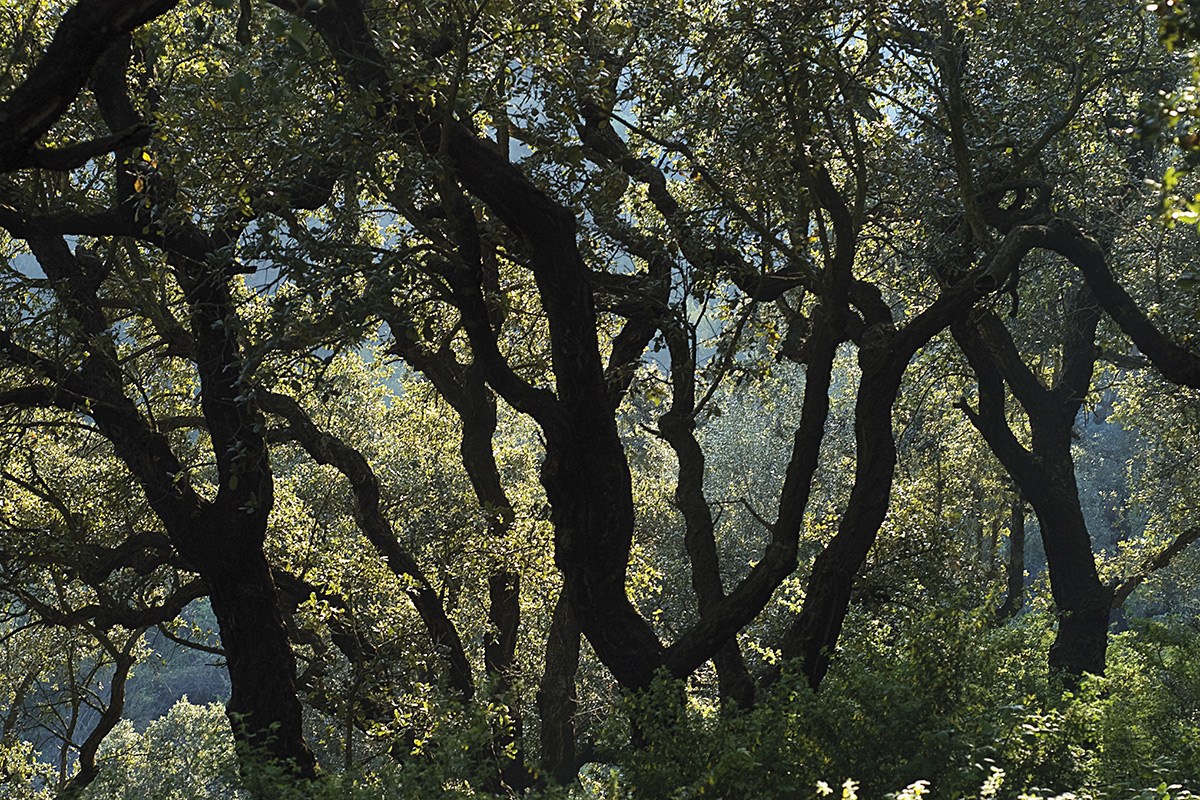
The traditional management of oak forests using the «quartering» (cuartos)technique in the Sierra del Toro (Castelló) has given us one of the best conserved forest areas of Valencia. / © A. Aguilella
ETHNOBOTANY’S CONTRIBUTION
Since the birth of ethnobotany as an academic discipline, researchers have pointed out the many potential benefits of ecological knowledge in traditional societies that have exploited forests, agriculture and livestock, helping to strengthen the protection of natural areas and improving the quality of life for local people. There is a rising general consensus on the important role that local communities have to play in any project that aims to unlock the secrets of the forests, and economically evaluate and preserve them.
When we approach ethnobotanical knowledge from the standpoint of conservation, we begin to appreciate the existence of practices that constitute lessons on how to make a sustainable use of biodiversity. The traditional management of oak forests using the «quartering» (cuartos)technique in the Sierra del Toro (Castelló) has given us one of the best conserved forest areas of Valencia. Based on land partitioning, each plot was subject to a schedule where the forest was put to different uses depending on the level of development of the undergrowth. It also enjoyed a period of protection when clearing occurred. Likewise, the Mas d’Asnar (Vilafranca, Castellón) shows the successful functioning of a sustainable farm in which a valuable forest in the Asnar ravine has been conserved.
Ethnobotanists are helping to promote non-timber forest products, which can be sold by the forest’s local inhabitants who can thus make a living by selling them, instead of cutting down the forest. Ethnobotanical knowledge adds value to biodiversity and increasing this value can become a way to justify conservation to society.
This type of traditional knowledge, along with current scientific knowledge, has shaped agroecology, which is also beginning to offer alternatives to forest destruction, to the extent that it integrates conservation of both forest and agriculture. Instead of burning or cutting down forests to plant agricultural lands, crops can be grown together with timber trees, in the same agroforestry plot, reducing timber harvesting in natural forests. Ethnobotanists help to create and manage agroforestry systems, especially in circumtropical areas.
«Biodiversity harbours potential medicinal properties as yet untested»
In some tropical areas like the Amazon, people’s knowledge on useful plants is such that they even come to differentiate populations. In fact, many taxonomists are guided by the distinctions made by the natives, in order to study this «hidden» biodiversity. In some cases these indigenous classifications distinguish between variations not just based on distinct morphological traits, but on smell, taste or even the effects and intensity of these, as in the case of yoco (Paulinia yoco) in the most western Amazon areas of Colombia and Ecuador.
Thus, we see the link between ethnobotany and conservation is important anywhere in the world where there are still communities and individuals who hold unstudied information on the uses and ecology of plants.
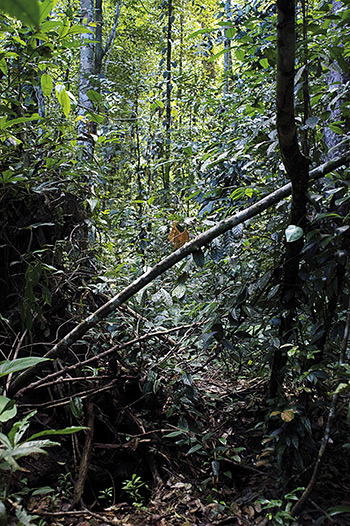
In some tropical areas like the Amazon, people’s knowledge on useful plants is such that they even come to differentiate populations. Picture of the Amazon near Belém de Pará in Brazil. / © A. Aguilella
THINK GLOBALLY, WORK LOCALLY: LOOKING AT VALENCIA
Placing the task of ethnobotanists within the global framework is essential to contextualise their work and give it a more universal content, enhancing its value. However, fieldwork remains the basis of all knowledge and the application of biodiversity. In Valencia, ethnobotanical study has grown significantly in recent decades and has primarily focused on the collection of popular knowledge about different species, mostly considered at an individual level and mainly from the aromatic and medicinal standpoint. Recently, several studies are underway, many local, revealing highly detailed uses of plants in municipal or county areas. Also, many local reference flora collections provide more and more aspects of ethnobotanical interest, although this is not their main objective.
So far, ethnobotanical work has primarily been analytical, based on field data collection, but there is a more urgent need to address synthetic studies from which a new kind of knowledge must emerge. It is also increasingly urgent to address ethnobotanical work on sustainable traditional uses of plants, processes and traditional management of ecosystems, a matter still pending in the ethnobotanical studies carried out in Valencia. We need to know the ways and practices of managing the environment, so that they can be put into practice and thus contribute to sustainability henceforth.
It is true that many traditional plant uses are not really sustainable, but this highlights the need to identify those cases that have shown themselves to be so, and then try to integrate them into our Western way of life. It may be slightly more complicated, but undoubtedly interesting to try to understand the traditional worldview of the man-plant-nature relationship, in order to help us improve and develop our current view.
BIBLIOGRAPHY
BOE, 2007. «Ley 42/2007, de 13 de diciembre, del Patrimonio Natural y de la Biodiversidad». BOE, 299: 51,275-51,327.
CBD, 2011. Updated Global Strategy for Plant Conservation (GSPC). CBD.
Hernández-Bermejo, J. E. et al. (eds.), 2007. Catálogo preliminar de la etnoflora ibérica. Ministerio de Medio Ambiente. Madrid.
Martin, G. J., 1995. Ethnobotany. Chapman & Hall. London.
UN, 1992. Convention on Biological Diversity. United Nations. Río de Janeiro.


